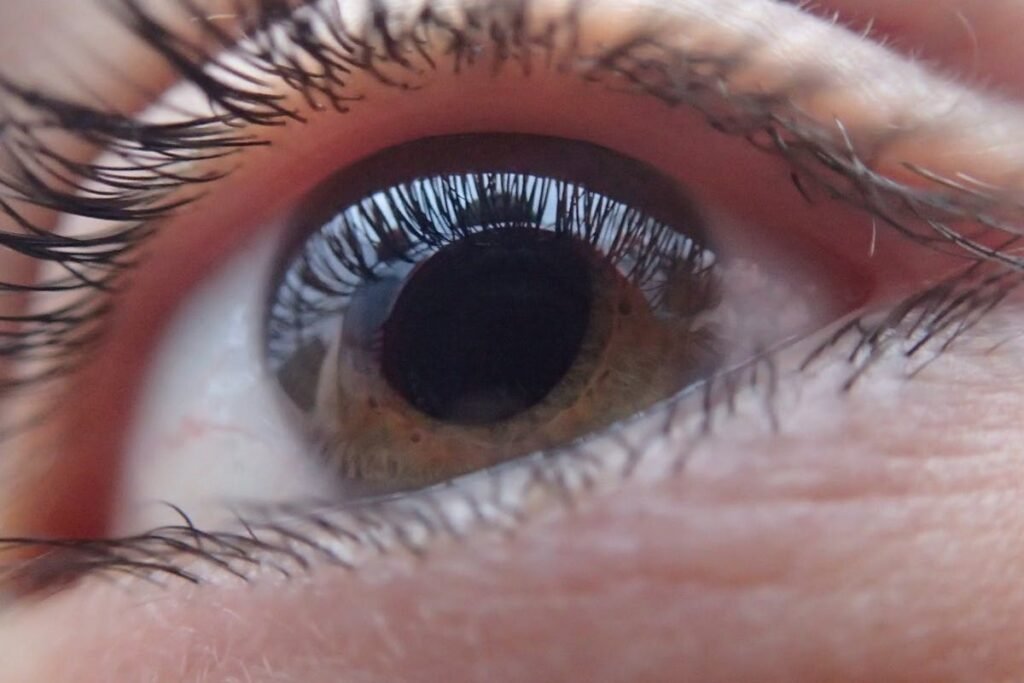Our bodies change dramatically from infancy to adulthood. But one mystery has puzzled people for years: Do eyeballs grow? While the common belief is that eyes remain the same size from birth, science paints a slightly more nuanced picture. This article delves into the anatomy of the eye, how it grows (if it does), and what this means for vision and eye health.
Do Eyeballs Grow From Birth to Adulthood?
Yes, but not as much as other parts of the body. When a baby is born, their eyeballs are about 16.5 millimeters in diameter. By the time they reach adulthood, the average eye measures around 24 millimeters. That’s only a modest increase, especially compared to the rest of the body. The bulk of the eye’s growth occurs within the first two years of life, then slows significantly.
Eyeball Growth in Infancy
During the first two years of life, the eye experiences rapid growth. This is the phase where the visual system develops in tandem with the brain, and stimuli help shape how the eye functions. By the age of two, an eye reaches approximately 70% of its adult size.
Eyeball Growth During Childhood
After infancy, eyeball growth continues but at a much slower pace. The eye subtly increases in size as a child ages, usually completing its growth by the early teenage years. Vision corrections like glasses often become necessary in childhood due to refractive errors that accompany these structural changes.
What About Teenage Years and Beyond?
From puberty onward, the eyeball size remains largely unchanged. Most adult eyes maintain their dimensions, although other factors—like changes in the lens and cornea—can still impact vision. Thus, the question “do eyeballs grow?” might best be answered with: “A little, and only until adolescence.”
Understanding Eye Anatomy and Growth
To appreciate how and why the eye grows, it’s crucial to understand its structure. The eye comprises multiple parts:
-
Cornea: the outermost layer responsible for refracting light.
-
Lens: adjusts focus for near and far objects.
-
Retina: houses photoreceptor cells that process visual information.
-
Sclera and optic nerve: maintain eye shape and send signals to the brain.
Growth primarily involves the length of the eyeball (the axial length), which directly influences vision. When this length increases excessively, it can lead to myopia, or nearsightedness.
How Growth Affects Vision
Axial length plays a critical role in determining whether an individual is nearsighted, farsighted, or has normal vision. If the eyeball becomes too long, light focuses in front of the retina, causing blurry distance vision.
Myopia and Eye Growth
The global rise in myopia is linked to environmental and genetic factors that influence eye growth. Increased screen time, limited outdoor activity, and prolonged close-up tasks are believed to contribute to excessive axial elongation.
Hyperopia and Smaller Eyes
Conversely, hyperopia, or farsightedness, can result when the eyeball is too short. This condition is more common in young children, who often grow out of it as their eyes develop.
Scientific Studies on Eyeball Growth
Modern imaging technologies like optical coherence tomography (OCT) and ultrasound biometry have provided valuable insights. Longitudinal studies indicate that eyeball growth stabilizes in adolescence, but environmental factors can still cause minor fluctuations in axial length throughout life.
Does Eye Color or Genetics Influence Growth?
Eye color doesn’t directly affect growth, but genetics certainly do. If one or both parents are myopic, their child has a higher chance of developing myopia, largely due to inherited growth patterns in the eye.
Environmental Impacts on Eyeball Growth
Environmental elements play an undeniable role. Studies reveal that children who spend more time outdoors have a reduced risk of developing myopia. Natural light is believed to regulate dopamine release in the retina, which in turn inhibits excessive growth of the eyeball.
How Eye Shape Changes Over Time
Although eyeball size remains stable in adulthood, changes in eye shape can occur due to aging, trauma, or disease. These changes may affect vision, even if the overall size remains the same.
Conditions That Alter Eye Size
Certain rare medical conditions, like buphthalmos (in infants with congenital glaucoma), can cause abnormal eye enlargement. On the opposite end, microphthalmia refers to an unusually small eye, usually a congenital defect.
Does Aging Reverse Eye Growth?
No, the eyeball doesn’t shrink with age. However, changes in the lens (like cataract formation) and corneal shape (from conditions like keratoconus) can alter vision quality, giving the impression that the eye itself is changing size.
Corrective Lenses and Their Relation to Eye Growth
Glasses and contact lenses don’t stop eye growth but help compensate for the visual consequences of abnormal growth. New therapies like orthokeratology lenses aim to slow myopia progression in children by reshaping the cornea overnight.
Surgical Options to Control Eyeball Growth
In some cases, procedures like LASIK or implantable contact lenses (ICLs) may be used to correct refractive errors caused by axial elongation. However, these don’t affect the actual size of the eye, just how it refracts light.
How Vision Therapies Target Growth-Related Issues
Behavioral optometry and vision therapy can support children with focusing issues due to eye growth. These therapies use structured activities to train the eyes and brain to work better together.
What Parents Should Know About Eye Growth in Kids
Routine eye exams from infancy through adolescence are vital. Vision problems often go unnoticed because children may not realize their vision is impaired. Early intervention can prevent complications and guide development.
Diet and Nutrition for Healthy Eye Growth
Nutrients like omega-3 fatty acids, lutein, and vitamin A support eye development. Encouraging a balanced diet rich in leafy greens, fish, and colorful vegetables helps maintain eye health during growth phases.
Does Eye Growth Stop Entirely?
Functionally, yes. While the eye can slightly change shape or length in response to certain stimuli, these changes are minimal. By the early teen years, active growth halts, and any further alterations are typically linked to pathology.
How to Maintain Healthy Eyes After Growth Ends
Once the eyes stop growing, maintenance becomes key. Protective eyewear, regular check-ups, and avoiding eye strain help preserve vision. Digital hygiene—like the 20-20-20 rule—can reduce screen-related stress.
The Myths and Facts About Eye Growth
Myth: Eyes are fully grown at birth.
Fact: Eyes grow, especially in early childhood.
Myth: Eyes shrink in old age.
Fact: While appearance may change, the size does not reduce.
Myth: Wearing glasses makes your eyes worse.
Fact: They help compensate for visual changes, not cause them.
Also read: Toe Straightener: What It Is and Why It Matters
FAQs
Why do babies have such large-looking eyes?
Babies’ eyes are proportionally large compared to their heads because their eyes have already reached around 70% of adult size at birth.
Can screen time affect eyeball growth?
Yes, excessive screen time is associated with increased risk of myopia, which results from the eyeball elongating too much.
Do your eyes get bigger when you cry a lot?
No, crying doesn’t affect the size of your eyeballs. Swelling around the eyes may give that illusion, though.
Is it normal for one eye to grow more than the other?
Minor differences can occur but significant asymmetry might indicate a medical condition and should be evaluated.
Can adults develop myopia due to eyeball growth?
In rare cases, yes. However, most adult-onset myopia is due to other structural changes, not active growth.
What’s the best way to prevent abnormal eye growth in kids?
Encouraging outdoor activity, balanced diet, and regular eye exams can help prevent or detect early issues with eye growth.
Conculsion
So, do eyeballs grow? Yes, but subtly and mostly in early life. Understanding the phases of eye development allows us to appreciate just how dynamic our bodies are. Although adult eyes remain relatively stable in size, their function can evolve due to age, environment, and genetics. Monitoring these changes and adopting healthy habits ensures long-term visual well-being.


